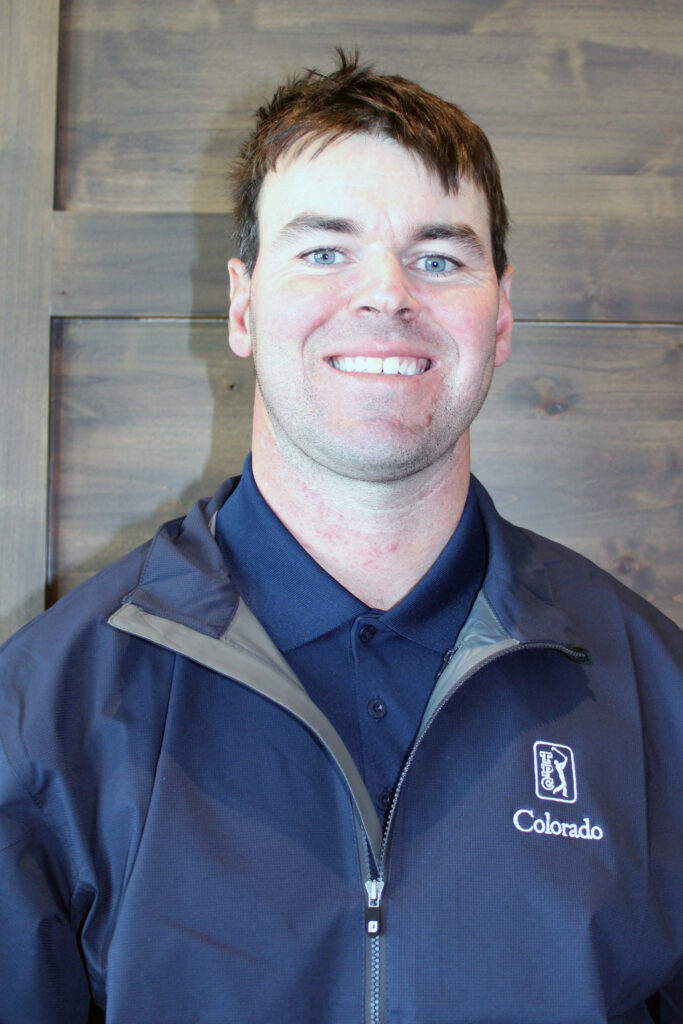Kevin Malloy, Superintendent, TPC Colorado


Hole 16 TPC Colorado


1. What motivated your club to join the Audubon International Cooperative Sanctuary Program (ACSP) for Golf?
TPC Colorado is located in Berthoud, Colorado, which sits at the foothills of the Rocky Mountains. We’re fortunate to be in such a beautiful area where the wildlife is plentiful. As one of the first ground-up golf courses in the state in nearly a decade at the time of development, we felt that it was important to build with conservation in mind, taking the proper steps to preserve the environment around us as best as possible. Our property is home to one of the largest Blue Heron rookeries in the state of Colorado and we wanted to keep these natural inhabitants safe and thriving. We believe that our golf course enhances the environment throughout the entire development, that covers 865 acres in total, featuring 130 areas of permanent open space. By taking part in the Audubon International Cooperative Sanctuary Program, we can highlight and continue to minimize our ecological footprint while enhancing the ecosystem around us for natural wildlife populations. Some of our diverse wildlife we see commonly see on property are elk, fox, geese, eagles, herons and hawks.
Related: Inviting Birds of Prey Raptors to Your Golf Course
2. What did it take to achieve ACSP certification – how long was the process and what steps were involved?
The ACSP certification process does take some time and energy, but it is well worth the investment and benefits to the local ecosystem. We were fortunately in a place of developing with conservation as a thought of the process, allowing our certification to flow smoothly. We were able to look at these natural populations existing on the property and pair efforts to match species needs. An example of this is supplementing native grasses and plants that are used as food sources. The certification process forces you step back and look at your operational practices in a different light and really reevaluate or plan on what will make an impact and keep natural populations in the area.
3. What did it cost to earn certification all-in and what were the biggest expense items?
The cost to complete the process truly depends on where the development of the facility stands. In our case the cost was minimal in construction, we knew while developing that our goal was to be an Audubon Certified Sanctuary and we were able to plan early for any on-site additions, like our bee garden and water diffusers for natural algae reduction. The main costs we incurred were purchasing bird boxes, diffusers, seeds, plants, etc., and the registration costs with Audubon. Any costs incurred can easily be rationalized by seeing the environment flourish around the property.
Related: How to Be a Bee-Friendly Golf Course
4. What were / are the most challenging aspects of being certified and maintaining the standards required to achieve and retain that status?
At this time, we are a newly certified property (established in 2019 and certified in 2021) and have not yet gone through a recertification process. However, the most difficult part is simply committing the time to stay up on efforts throughout the years. Like anything else, if you get behind on record keeping or regular maintenance, it will be a mountain to climb to catch back up. So, just staying committed to dedicating time is the most important aspect in my mind.
5. What specific benefits are you reaping from being a Certified Member?
The biggest benefit of being a Certified Audubon Member is knowing that we are being stewards of the environment and seeing those real impacts on course. When you see returning populations of birds and wildlife come back in larger sizes the following year, you know you’re doing something right. A lot of people outside of the golf world have dubbed golf “bad for the environment” and this certification works towards changing that outlook. The more courses that go through this process not only show that to be untrue, but that we do all we can to provide a livable ecosystem for the native wildlife around.
Related: Jim Pavonetti Superintendent of Fairview Country Club
6. What would you share with other superintendents and course managers who are considering joining the Audubon International ACSP program?
What I would share with other superintendents and golf course managers is that the ACSP program is immensely beneficial for any golf course property and is worth the investment. Not only does it help change the bad stigma given to golf courses mentioned above, but it will force you as a leader to take a step back on all your programming and help to establish or help to reevaluate your practices. You may find that by thinking outside of the box and looking at things from another angle you can save your operation money by limiting your ecological impact.
7. What is the best guidance or tip(s) you have received pertaining to being a superintendent and overseeing the golf course agronomy/maintenance department? (And from whom?)
I am the son of a retired golf course superintendent and have been around the business my entire life and had many great mentors. As I have gotten further into my career, I have really come to the realization that it takes a team to make everything happen. My favorite quote came from a former boss, Jeff Plotts, current Superintendent at TPC Sawgrass. He once told me when I was a young 22-year-old assistant, “If you always think the problem is someone else, it is probably you.” This has really formed how I look at coworkers, employees and members/guests. We are always so quick to blame others and not look at what we can do in a positive manner.
Recent Posts
Memphis Country Club: A Golfer’s Study in Precision and Tradition
If you have ever teed it up at Memphis Country Club, you know this isn’t…
Foley Company attains GCSAA Silver Partner Status
Foley Company, a leader in turf equipment innovation and technology, affirms its support of the…
Harrell’s continues longstanding support of the GCSAA Foundation
Harrell’s LLC, a leading distributor of customized agronomic products for turfgrass since 1941, has donated…
City of Orlando Announces New State-of-the-Art Driving Range at Dubsdread Golf Course
The City of Orlando is excited to announce the construction of a brand-new, state-of-the-art driving…
Discover Puerto Rico for Great Golf Trips and After-Round Activities, Amenities
Golfers cannot live by the game alone which is why Puerto Rico provides the perfect…
Q&A with a Multi-talented Golf Course Architect – Part 2: Making the Rounds – Installment 39
This column features recollections of the author’s 37 years as a golf writer. These installments…


